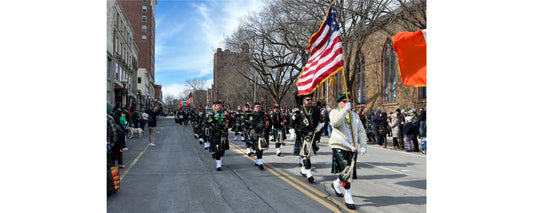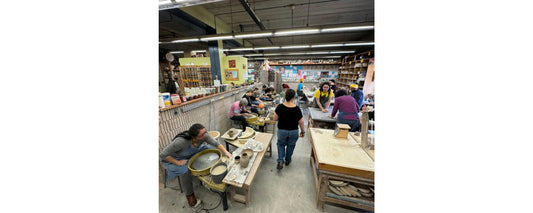It’s late morning, and the rows and rows of tidy carrels on the first floor of the Quinnipiac University Polling Institute are empty. The room is dim, and very quiet.
In fact, with an election just around the corner, everything is much quieter than you’d expect. The building—atop a hill and across Whitney Avenue from the university’s main campus, backed by a rocky outcrop and trees quickly shedding their leaves—is quite still. No wild shouts of analytical discord or esoteric numbers discussions at tables surrounded by dozens of statisticians.
Yet the Polling Institute—the uncannily reliable prediction center that’s made Quinnipiac University a household name across the country—is a powerhouse of statistical output, and before entering those hallowed halls, I imagined at least mild chaos on the inside. Instead, I’m met with ambient lighting, vintage political posters and a calm and friendly staff.
This is what daytime usually looks like, says Douglas Schwartz, Director of the Poll. Regular office hours at the Institute—which produces poll results all year long on political races and other issues, and is often quoted by major news sources—are for numbers-crunching.
sponsored by
That’s not to say things don’t get more intense on a regular basis as a result of the dualistic nature of the center’s activities; after all, they’ve got to collect information before they can analyze it. So, come evening, those carrels fill with interviewers trained to utilize the phones and computers at each desk for some serious data-gathering.
“Imagine 150 people talking at once,” Schwartz says, and you can begin to imagine the din that fills the first floor most nights from 6 to 9 p.m. “It’s buzzing, it’s humming, it’s loud.”
Today, this Hamden-based operation is a well-known national polling outfit, due to “slow and steady growth,” he says. But if you’d visited the Polling Institute in 1994, when Schwartz started there, you would have witnessed a small group polling in only Connecticut, New York and New Jersey. Not too much to talk about.
Then, however, came the 1998 D’Amato-Schumer Senate race in New York. Quinnipiac’s series of polls on that race were incredibly accurate. Schumer won, and so did the Institute: it got national attention as a result of those reliable predictions, Schwartz says.
sponsored by
It was onwards and upwards from there. The Institute started a national poll in 2001, quickly garnering attention for its spot-on snapshots of the electorate. During the 2004 presidential election, Quinnipiac was alone in (correctly) capturing Bush’s comfortable lead over Kerry in Florida, and, in 2006, its polling accurately predicted Ned Lamont’s upset primary win over incumbent Senator Joe Lieberman in Connecticut.
The reliability of the Polling Institute is in part due to its independence: it doesn’t poll for any group or candidate using outside funds. And it polls all year long in several states (crucial presidential swing states Ohio and Pennsylvania are on that list) for political races as well as a variety of other subjects. For example, a July 21 poll found that a majority of voters in Colorado want marijuana, legalized there in late 2012, to be limited to home and private-club use. “We don’t just parachute in at election time,” says Schwartz.
On the calling floor, the procedure is likewise consistent. Trained interviewers—a mix of Quinnipiac students, including political science majors happy to get in on the action, and non-students—use “random digit dialing” to generate the listed, non-listed, cellular and land line phone numbers called. When someone picks up, the caller always asks for the adult with the next birthday because—polling trivia alert—women tend to answer the phone more than men. The question helps ensure representative gender distribution.
It’s the details like that, combined with an exceptional analytics team, that matter. Although the staff may be political fanatics, the reason they’re not involved in impassioned debates all day, like I’d assumed, is because, as Schwartz puts it, “Our job is to reflect the news, not to make it.” Then again, its polls are news-making; in the past month, Quinnipiac’s three polls showing an extremely tight race for Connecticut governor is ratcheting up the urgency ahead of the general election next Tuesday.
The Institute’s rows of desks downstairs will be empty on the evening of November 4th, a well earned night off for the pollsters there. They’ll be at home like the rest of us, watching the results roll in—only, in addition to discovering who will sit in the governor’s office and the halls of Congress come January, they’ll also be waiting to see how they did.
Quinnipiac University Polling Institute
60 West Woods Rd, Hamden (map)
(203) 582-5201 | pollinginstitute@quinnipiac.edu
www.quinnipiac.edu/news-and-events/quinnipiac-university-poll
Written by Cara McDonough. Photographed by Dan Mims. This is an updated version of a story originally published on October 30, 2012.









